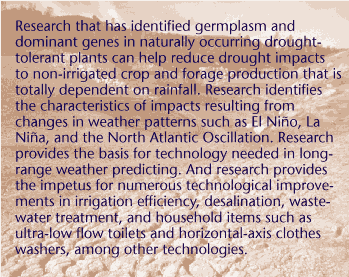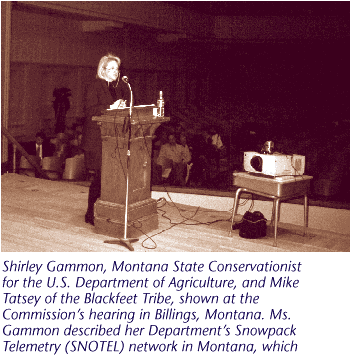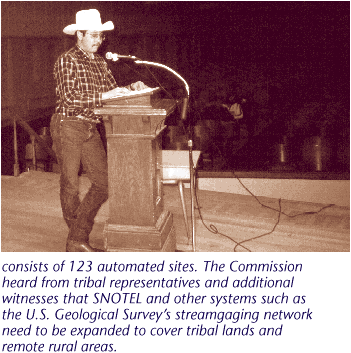|
|
|
 |
|
insurance program covers only major field crops in all locations. It does not include all vegetable and lesser field crops in all locations, nor does it cover livestock. We heard from farmers, livestock producers, and vegetable growers across the country that a more comprehensive insurance program is needed. Our full report summarizes various strategies that were suggested. Providing a Safety Net. We were cautioned that it will take time for farmers, ranchers, local businesses, communities, states, and tribes to make the transition from relief-oriented drought programs to drought preparedness. A safety net is needed, we were told, to help overcome the impacts of extreme occurrences of drought or the impacts of multi-faceted disasters (for example, droughts followed immediately by flooding). Our assessment indicates there are approximately 47 federal programs with elements of drought-related relief, primarily for agricultural droughts. One such authority is Title I of Public Law 102-250. This authority allows the Bureau of Reclamation to provide emergency response assistance, including emergency well drilling. However, Title I is temporary, and the assistance it authorizes is available only within the 17 so-called "Reclamation" states in the West. At our hearings in Austin
and El Paso, Texas, Atlanta, Georgia, Billings, Montana, and Washington,
D.C., witnesses expressed many concerns about the relief programs of the
U.S. Department of Agriculture. The application process for drought
assistance is too cumbersome; it takes too long to make decisions, and
placing federal decision-making outside the local level often results in
disconnection among the applicants and the programs. We believe that (continue) |
|
 |
 |
|
|
|